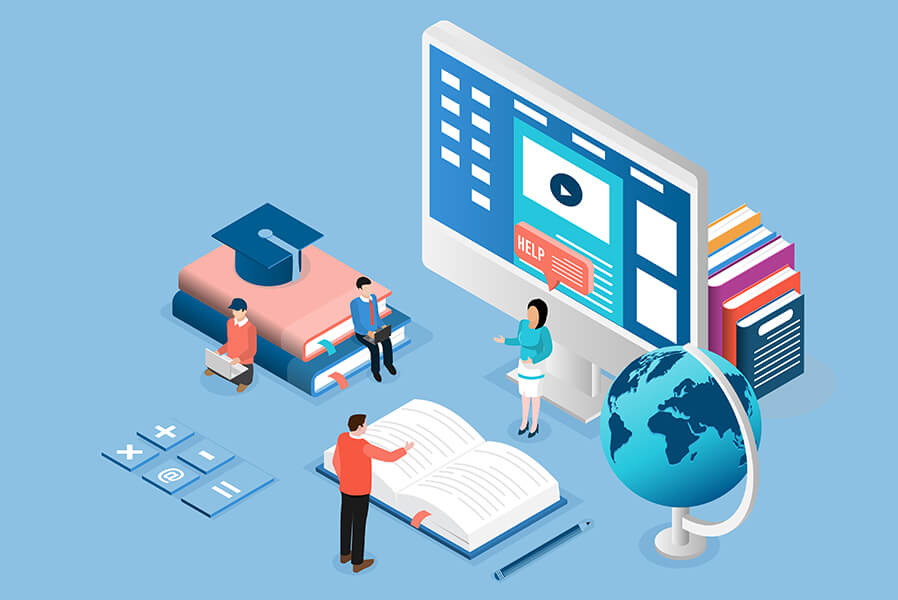
Classroom Technology: Transforming Education for the Future
In the fast-paced world of education, technology has become an integral part of the classroom experience. From interactive whiteboards to virtual reality simulations, classroom technology has evolved significantly, revolutionizing the way students learn and teachers instruct. Let’s delve into the dynamic landscape of classroom technology, exploring its benefits, challenges, and future implications.
I. Introduction
A. Definition of Classroom Technology
Classroom technology refers to the integration of digital tools and resources into the learning environment, aiming to enhance the educational experience.
B. Evolution of Classroom Technology
Over the years, classroom technology has evolved from traditional projectors to sophisticated interactive platforms, reshaping the dynamics of education.
II. Benefits of Classroom Technology
A. Enhanced Learning Experience
The incorporation of multimedia elements fosters a more engaging and immersive learning experience for students.
B. Improved Student Engagement
Interactive lessons and gamified content capture students’ attention, leading to increased participation and understanding.
C. Accessibility and Inclusivity
Technology enables personalized learning, catering to diverse learning styles and addressing the needs of students with different abilities.
III. Types of Classroom Technology
A. Interactive Whiteboards
Interactive whiteboards facilitate dynamic presentations, allowing teachers to create collaborative and visually stimulating lessons.
B. Educational Apps and Software
A plethora of educational apps and software enhance subject comprehension, providing interactive exercises and real-time feedback.
C. Virtual Reality in Education
Immersive experiences through virtual reality transport students to different environments, enriching their understanding of complex concepts.
IV. Challenges in Implementing Classroom Technology
A. Lack of Training for Educators
Many educators face challenges in effectively utilizing technology due to inadequate training and professional development opportunities.
B. Cost Constraints
The initial investment in technology infrastructure can be a barrier, especially for schools with limited resources.
C. Potential for Distraction
While technology enhances learning, there is a risk of students being distracted by non-educational content.
V. Successful Examples of Classroom Technology Integration
A. Flipped Classroom Models
Flipped classrooms, where students engage with instructional content at home and apply concepts in class, have proven successful.
B. Gamification in Education
The incorporation of game elements into lessons increases motivation and makes learning enjoyable for students.
C. Collaborative Learning Platforms
Online platforms promoting collaboration and group projects enhance students’ teamwork and communication skills.
VI. The Future of Classroom Technology
A. Emerging Trends
Adaptive learning platforms and artificial intelligence are anticipated to play a significant role in personalized education.
B. Potential Innovations
The integration of advanced technologies like augmented reality holds promise for transforming traditional learning methods.
VII. Tips for Effective Integration
A. Adequate Teacher Training
Investing in comprehensive training programs ensures educators can harness the full potential of classroom technology.
B. Customized Learning Paths
Tailoring technology integration to individual student needs promotes a more personalized and effective learning experience.
C. Continuous Evaluation and Improvement
Regular assessment and feedback loops allow for the refinement of technology integration strategies based on effectiveness.
VIII. Real-life Case Studies
A. Schools Embracing Technology Successfully
Highlighting examples of schools that have effectively integrated technology to enhance student outcomes.
B. Overcoming Implementation Hurdles
Examining instances where educational institutions have successfully navigated challenges in implementing classroom technology.
IX. Impact on Student Achievement
A. Academic Performance
Research indicating a positive correlation between technology integration and improved academic performance.
B. Soft Skills Development
Exploring how technology contributes to the development of critical soft skills such as communication and problem-solving.
X. Parental Involvement in Classroom Technology
A. Communication Platforms
Technological tools that facilitate communication between educators and parents, fostering a collaborative learning environment.
B. Monitoring Student Progress
Digital platforms that allow parents to track their child’s academic progress and engagement with educational content.
XI. Addressing Concerns about Screen Time
A. Balancing Screen Time and Traditional Learning
Strategies to strike a balance between screen-based learning and traditional methods to mitigate potential negative effects.
B. Health Considerations
Acknowledging and addressing concerns related to the physical and mental health impact of increased screen time.
XII. The Role of Classroom Technology in Remote Learning
A. Lessons from the COVID-19 Pandemic
Examining how technology facilitated remote learning during the pandemic and its impact on the education landscape.
B. Hybrid Learning Models
Exploring the potential for a hybrid approach, combining in-person and online learning for flexibility and resilience.
XIII. Building a Tech-Ready Education System
A. Infrastructure Development
The importance of robust technology infrastructure in ensuring seamless integration in educational institutions.
B. Government Initiatives
The role of government policies and initiatives in supporting the adoption of classroom technology nationwide.
XIV. The Role of EdTech Companies
A. Partnerships with Educational Institutions
Examining how partnerships between EdTech companies and schools can drive innovation in classroom technology.
B. Responsible Product Development
The ethical considerations in developing and implementing technology products in educational settings.
XV. Conclusion
A. Recap of Key Points
Summarizing the transformative impact of classroom technology on education.
B. The Continued Evolution of Classroom Technology
Highlighting that the journey of integrating technology into education is ongoing, with constant advancements and innovations.
https://projectworking0.blogspot.com/2023/11/knowledge-unleashed-innovative-learning.html

